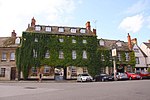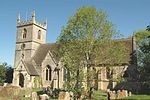Blenheim Park
Sites of Special Scientific Interest in Oxfordshire

Blenheim Park is a 224.3-hectare (554-acre) biological Site of Special Scientific Interest on the outskirts of Woodstock in Oxfordshire. It occupies most of the grounds of Blenheim Palace. The park was once an Anglo-Saxon chase and then a twelfth-century deer park. It now has some of the best areas of pasture and oak woodland in the country. The large lakes were created in the eighteenth century, and they are regionally important for breeding and wintering birds. Invertebrates include three rare beetles which are included in the British Red Data Book of Invertebrates, Rhizophagus oblongicollis, Plectophloeus nitidus and Aeletesatomarius.
Excerpt from the Wikipedia article Blenheim Park (License: CC BY-SA 3.0, Authors, Images).Blenheim Park
Main Road, West Oxfordshire Hanborough
Geographical coordinates (GPS) Address Nearby Places Show on map
Geographical coordinates (GPS)
| Latitude | Longitude |
|---|---|
| N 51.836 ° | E -1.37 ° |
Address
Pump House
Main Road
OX29 8LD West Oxfordshire, Hanborough
England, United Kingdom
Open on Google Maps









